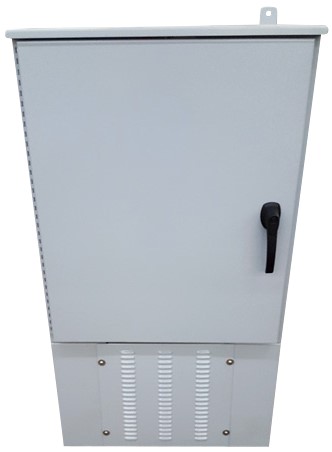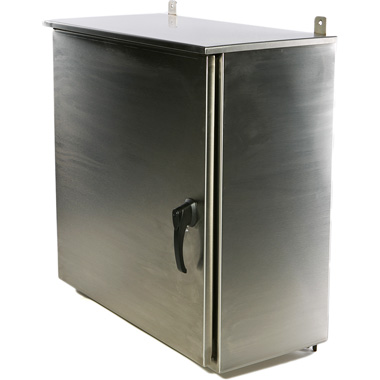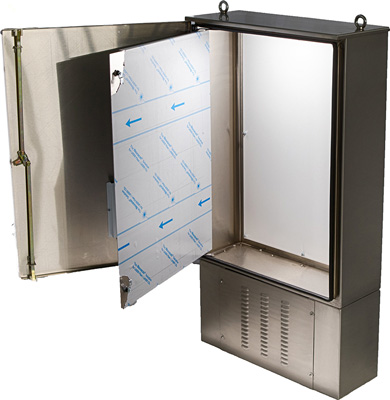< Return to FAQ
Differences Between a NEMA and UL Type 4 Enclosure

Enclosures used in housing electronic/electrical components are usually listed with UL and NEMA ratings. But exactly what do they mean and is there a difference? West Tool Enclosures provides both of these options. With a vast catalog
of sizes and configurations to choose from.
Get Started
here!
When it comes to basic electrical safety, in the US there are two major organizations which set and define the safety standards: NEMA and UL. Both these ratings adequately describe the various degrees of protection against access of certain substances like dust and water, although they use different test parameters and methods to define their types of enclosures subsequently.
NEMA, as outlined, is a standard-setting body in the US for enclosures. The acronym represents the National Electrical Manufacturers Association, an exclusive trade association whose overall members comprise multiple electrical component manufacturers within the US. Besides being a renowned industry advocacy body, NEMA is best known for its distinct standards, and it has published more than 600 of them.
These standards are inclusive of both enclosure integrity as well as electrical connections. NEMA defines design standardization of both the ubiquitous three and two-pronged wall plugs that are commonly found in North America. Essentially, NEMA offers a forum for the distinct development of the technical standards which benefit both the users as well as the industry at large, not to mention advocating industry policies concerning regulatory and legislative matters, and collection, evaluation, and distribution of industry data.
UL, or the Underwriters Laboratories, on the other hand, is a distinct certification and safety consulting company whose headquarters are located in Northbrook, Illinois. It is an independent global safety science organization with over a century of experience and expertise in the innovation of safety solutions ranging from the public electricity adoption to new advances in renewable energy, sustainability, as well as nanotechnology. This organization is devoted to promoting safe working and living environments, subsequently helping protect places, products, and people in massive ways, not to mention facilitating trade as well as affording peace of mind.
UL requires strict compliance testing of all electrical enclosures by competent evaluators who are independent of the manufacturers. UL dispatches qualified site inspectors to the manufacturers to help ensure compliance with the prescribed material specifications and manufacturing methods.
The primary difference between the UL and NEMA standards is distinctly in the “testing” area. Usually, UL standards mandate that manufacturers organize the independent evaluation of their standard compliance by the use of independent evaluators as earlier mentioned. Alternatively, since NEMA is an association of manufacturers, this is perhaps why NEMA standards don’t feature independent testing requirement, affording manufacturers the luxury of monitoring their compliance.
The Official NEMA standards can be found in the distinct NEMA Standards Publication 250-2008 – Electrical Equipment Enclosures (Max. 1000 Volts), while the official UL standards can be found in UL 50-Electrical Equipment Enclosures, UL 508-Industrial Control Equipment, and Non-Environmental Considerations.
Owing to the multiple types of NEMA and UL enclosures available, it is essential to understand where the difference comes in so that you can make an informed purchase decision. We at West Tool Enclosures (WTE) will highlight the differences between a NEMA and a UL Type 4 enclosure. It is vital to note that both UL and NEMA have contradictory definitions of precisely what each rating includes. Nevertheless, to quickly understand this comparison, we will use NEMA terms.
Comparing NEMA and UL On Type 4 Electrical Enclosures

Type 4 Enclosures
These are non-ventilated outdoor or indoor enclosures purposely structured to offer protection against rain and windblown dust, hose-directed water, splashing water, as well as the damage caused by the external formation of ice. They are suitably used in regions where there is high exposure to significant amounts of water; although this does not mean they are submersible.
The protection Type 4 enclosures afford slightly ramps up things further, however the main difference between UL and NEMA definitions is just the common language used. Unlike NEMA, UL requires manufacturers to perform independent checks, and the same applies to type 4 enclosures.
- These enclosures are usable both outdoors and indoors. The enclosures boast all the protection associated with Type 3 enclosures. Usually, the added protection found in level 4 is primarily about protection against hose-directed and splashing water. As such, these enclosures can effectively survive wash-downs from industrial hoses.
- Commonly referred to as rain-tight enclosures courtesy of their remarkable weather resistance, NEMA and UL Type 4 enclosures are usually utilized for highly sensitive electronic/electrical equipment since they offer high-level protection from the various external elements. They are commonly gasketed with doors which clamp to provide the maximum seal.
- NEMA and UL Type 4 enclosures generally find use in dairies, on ship docks, as well as in breweries.

Type 4X Enclosures
Just as with Type 4 enclosures, the main difference between a UL Type 4X enclosure and NEMA enclosures is primarily about the definitions as well as the standard UL rule that mandates for independent checks.
- Type 4X represents enclosures that are generally utilized in complicated corrosive and industrial settings where the unique needs significantly exceed typical Type 4 enclosure capabilities. Interestingly, despite UL not seeming to identify the Type 3X variants, their standards list does include Type 4X.
- These enclosures are usually constructed using certain types of stainless steel which boast a high degree of protection against corrosive materials. Also, these types of enclosures find use in sectors like poultry/meat processing facilities that are known for repeated total wash-downs with disinfectants, not to mention petrochemical facilities inclusive of offshore petroleum facilities.
In summary NEMA has established numerous and varying protection levels and standards which effectively suit and regulate electrical enclosures. Furthermore, they have also outlined standards which enclosure manufacturers should effectively satisfy, at every level. With NEMA being a manufacturer’s association, their standards are subsequently self-administering. As such, it is not necessary to conduct an independent check on the claims of enclosure manufacturers.
UL, on the other hand—an organization whose specialty is producing various standard types—has established its standards relative to the different enclosure types. Unlike the NEMA way of operating, UL requires that any manufacturer looking to make their claim not only meet their standards but also undergo independent checks to ascertain their claims.
Your One-Stop Shop for UL and NEMA-Rated Enclosures
With this in mind, if you are looking for certified NEMA and UL Type 4 enclosures, then West Tool Enclosures is where you need to be! WTE has earned our spot at the top of the tier by offering high-quality products which protect against access to specific material regardless of the environmental conditions by making use of the latest designs, materials, and technology. WTE fabricates and designs quality UL and NEMA-rated instrument and electrical enclosures as per your precise specifications and effectively meets your lead times.
We manufacture enclosures for an assortment of applications, precisely where delicate components and electronics need to be protected from certain elements. We believe that by leaving us to take care and subsequently fulfill your enclosure needs as you configure the components that go into it will not only help you save time, but also frustration, and of course money. Get in touch with West Tool Enclosures today to learn more about the various available enclosures as well as how we can help you get the best configured enclosures, at a reasonable and competitive price.